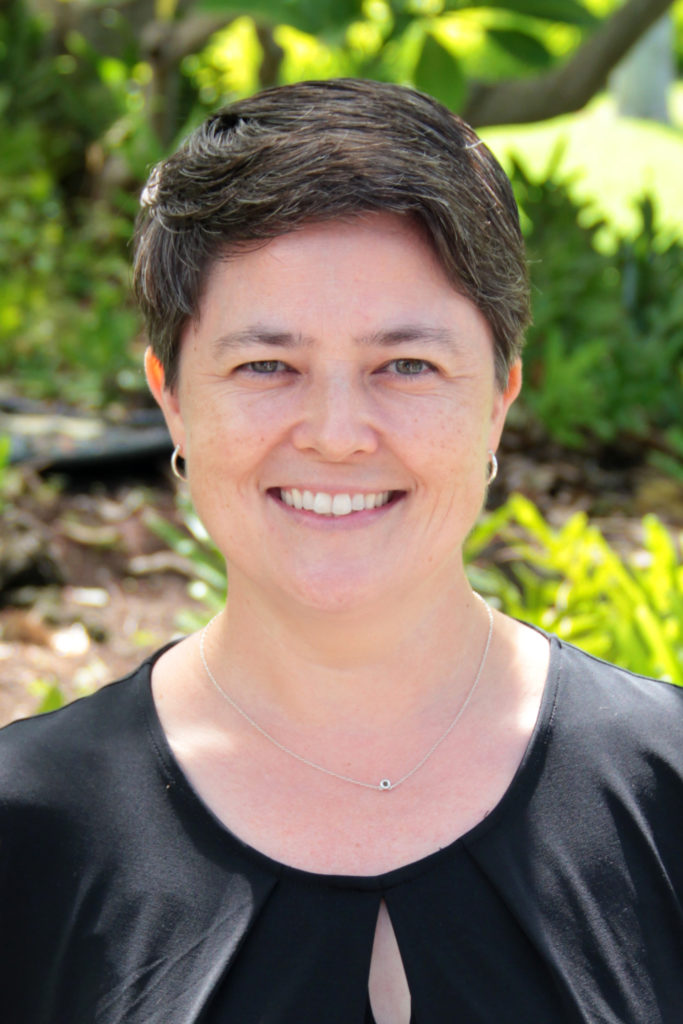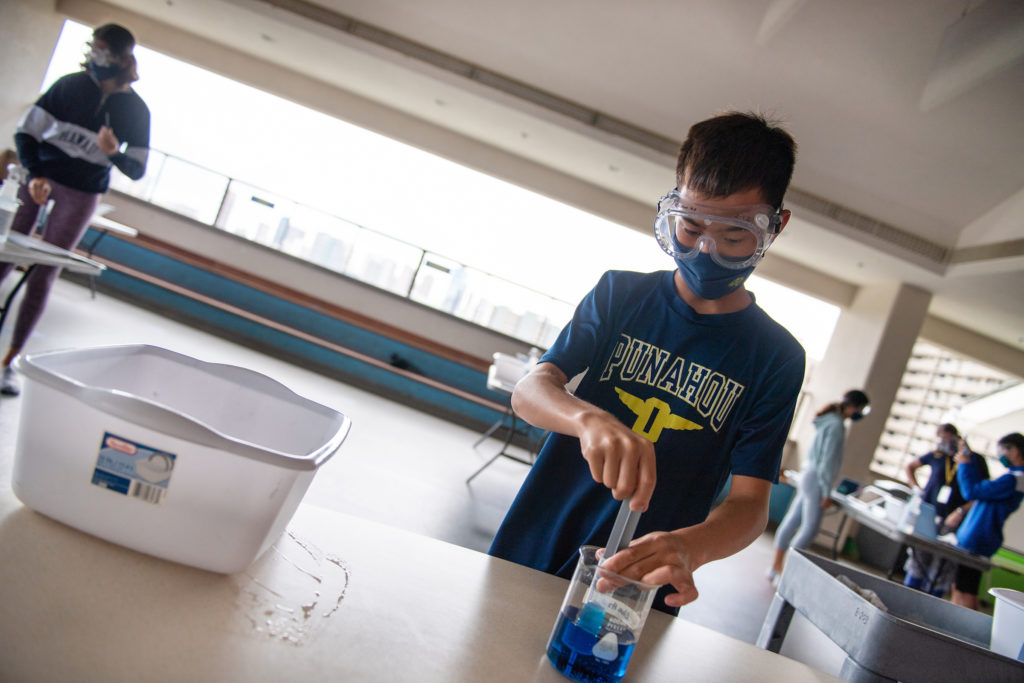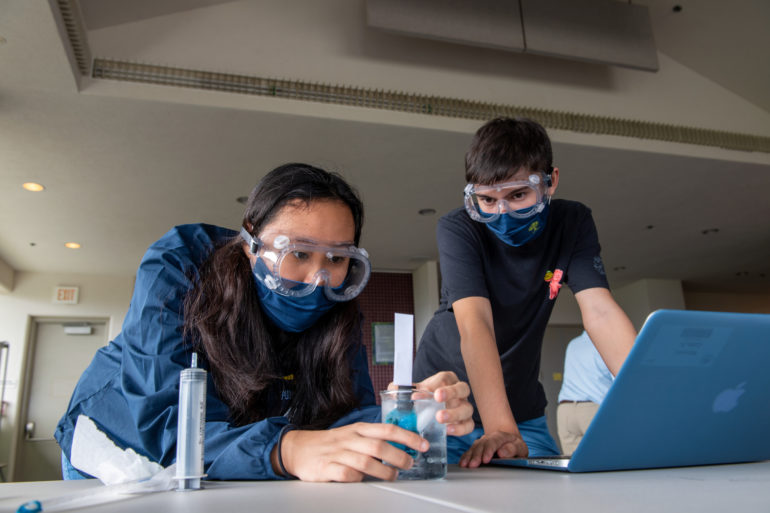Case Middle School science teacher, Erin Flynn, shares how she’s creatively adjusted her classroom practices to accommodate COVID-19 safety protocols. Despite the challenges, she’s found surprising new benefits from the tools she’s using, and her students are excited to be engaging in science exploration – even if wind introduces an unexpected variable in their outdoor science experiments.

How have you adapted your teaching to the new safety protocols?
Running lab experiments in person has been challenging, but it’s worth it. I have my students working in pairs, where one student physically runs the experiment, and is in charge of cleaning and sanitizing all of their equipment once they have finished. (There is no sharing of materials between students in the group.) The other student is responsible for communicating the protocol and procedures to their partner, and is the “runner” to ask the teacher questions as they arise.
One of my classes is taught in a non-science classroom, so that poses its own unique challenges. Our labs are run outside in the team space. I had never considered the influence of wind on the success of our lab experiments before, so that has been a variable I’ve needed to address this year.
We are continuing to learn how to do this work in the safest, most efficient way. But the kids are just so happy to be doing science again.
What opportunities have come out of these challenges?
Since we have half of our students learning from home, while the other half comes on campus, we’ve needed to get a little creative with how we approach teaching and learning.
As far as teaching science concepts, we have been using technology quite a bit to adapt our work in ways that allow for the same experience with a twist. I would typically break students into small groups to discuss something I have introduced in class, and now I have my students join discussion groups using WebEx teams.
In the past, I might work out a chemistry problem on the board; now I share my iPad screen over WebEx for the kids at home, as well as for the kids in class who might not be able to see the TV I’m projecting the meeting on. That’s an added benefit that came to me by surprise.
We have also been using web-based lab simulations that have many benefits. Of course, hands-on learning opportunities help to teach lab skills, and experiential learning is best in science, but with our new safety protocols, many of the labs we once did are not feasible, so the simulations provide opportunities to learn the same concepts, which is what we want for our students.
They also allow us to run experiments that we might not choose to do in the lab with eighth graders, due to safety concerns with certain chemicals and reactions. Simulations allow a safe space for kids to make mistakes and learn from them with little serious consequence, because you don’t need to clean up a whole lot of equipment and gather new materials to re-run the experiment, so time is saved as well.
So here and there, we have needed to adapt our teaching, but we are so blessed with all of the support we get from the School to do our work in the best possible ways, supporting the pedagogy we know to be best for our students.
What is your favorite thing about teaching science?
I absolutely love that learning science concepts helps us to understand our world and how it works. I always get so excited when students come to me and tell me how something they learned in my class helped them in their life. It’s all about making connections to the real world, and teaching students content that is meaningful to them.
The last thing that I love about teaching science, especially in middle school, is that I can help spark an interest in students who perhaps never knew that science was an option for them. Some might flat out dislike the subject when they come into my class. My hope for them is to instill a curiosity, an openness to learn, so that they might be more open to STEM career paths in the future, because there is truly something for everyone.
How does it feel to have the students back on campus?
It has been a true pleasure to have the kids back on our campus. To see their faces, to feel their energy, and make those personal connections – that’s what makes teaching the best job in the world. I’m so thankful to be back.


